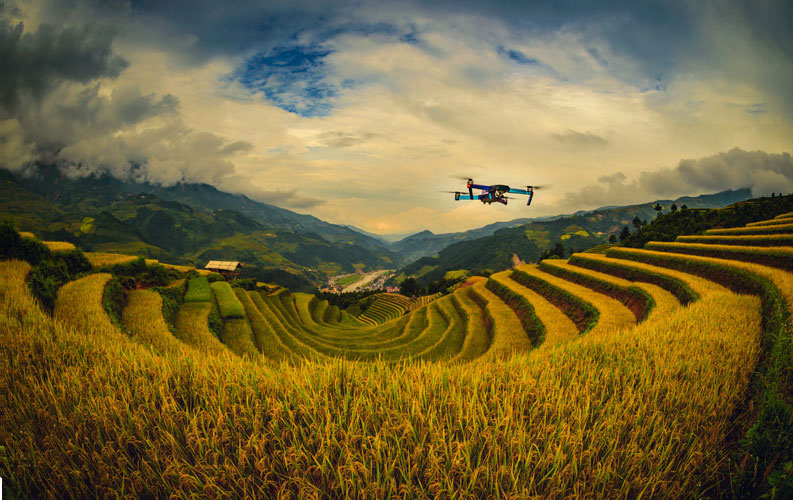Agritech adoption among smallholders in developing countries is essential for food sustainability by 2050. The world’s population is on track to reach 9.7 billion by 2050, requiring a corresponding 70 percent increase in calories available for consumption. By 2030, the water supply will fall 40 percent short of meeting global water needs, and about one-quarter of arable land is degraded and needs significant restoration before it can again sustain crops at scale. Of even greater challenge is the increasing environmental pressures, such as climate change and the economic impact of catastrophic weather events, and social pressures, including the push for more ethical and sustainable farm practices, such as higher standards for farm-animal welfare and reduced use of chemicals and water.
To address these forces, agriculture must embrace a technology, especially in digital transformation enabled by connectivity. Yet agriculture remains less digitized compared with many other industries globally. Past advances were mostly mechanical, in the form of more powerful and efficient machinery, and genetics, in the form of more productive seed and fertilizers. Now much more sophisticated, digital tools are needed to deliver the next productivity leap. These new technologies can upgrade decision making at scale especially among the worlds’ small-scale farmers that have been left out of the previous agricultural technologies like what we have done at UjuziKilimo, allowing better risk and variability management to optimize yields and improve economics. Deployed in animal husbandry, they can enhance the well-being of livestock, addressing the growing concerns over ethical and sustainable production.
Of more concern is the regions that have historically not benefited from this past mechanical and genetic technologies to boost productivity, due to small farms (hard to mechanize with) and lack of investment capacity to implement improved seed/inputs, poor physical infrastructure to ensure access, markets, and financial solutions. These regions are in the developing economies, and poorer countries in Africa, Asia, and South Americas. These regions have a greater risk of them missing out in these new digital revolutions as this are the same regions that lack the necessary connectivity infrastructure, making development of it paramount. Infrastructure must be developed to enable the use of connectivity in farming, access to information and financial tools; and where connectivity already exists, strong business cases especially around market access must be made in order for solutions to be adopted by the small holder farmers.
In Africa, already more than 75% of the continent has 3G coverage, and majority of the population already have access to mobile phones, which have increasingly become a ubiquitous source of information, education and financial services like the well-known Mpesa, enabling rural farms access the tools they need to produce better, aggregate and access markets for improved livelihoods. During the COVID-19 period, our global food system has shown its vulnerabilities. The gridlocked global supply chains have highlighted the importance of having more local providers, which could increase the resilience of smaller farms.
Projecting this into the future, the significant environmental benefits from decreased travel and consumption during the crisis are likely to drive a desire for more local, sustainable sourcing, requiring producers to adjust long-standing practices. Agriculture is in the early days of yet another revolution, that will significantly be driven by data and connectivity. Artificial intelligence, analytics, connected sensors, genomic sequencing and other emerging technologies could further increase yields, improve the efficiency of water and other inputs, build sustainability and resilience across crop cultivation and animal husbandry. Young people are at the center of this new revolution, driving new ethical production and consumption, environmental sustainability, and incorporation digital technologies in agriculture to enhance transparency in our food systems.
This article is part of of a presentation made by Brian Bosire during the Innovation for Cool Earth conference in Japan by the Government of Japan’s Ministry of Economy, Trade and Industry, and NEDO.



